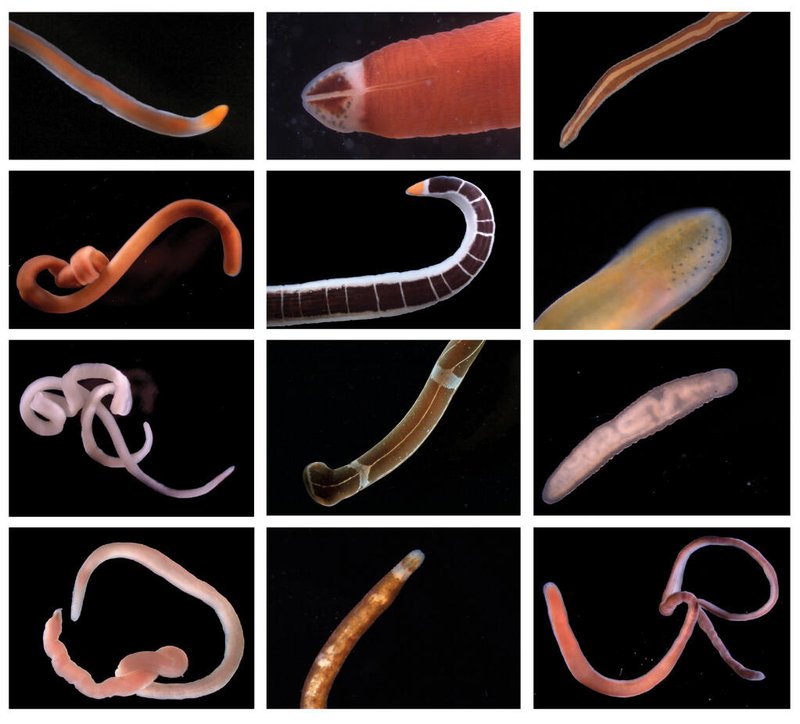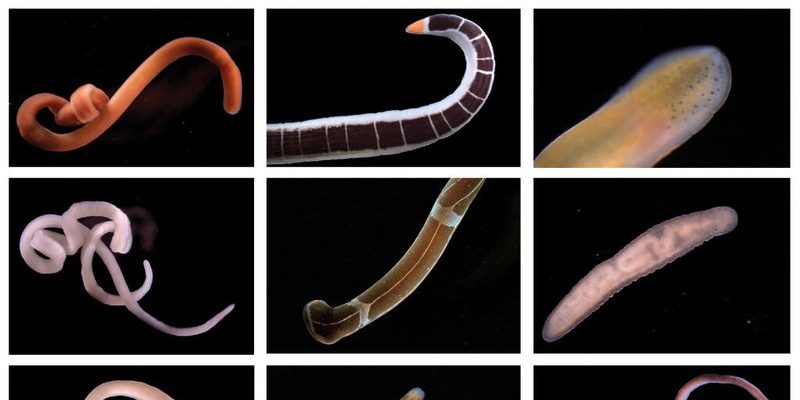
Imagine if you could trace back the lineage of these long, slender beings. It’s a bit like following a family tree, but instead of humans, you’re looking at a diverse array of organisms that have adapted in remarkable ways to survive and thrive in various environments. So grab a comfy seat, and let’s dive into the world of ribbon worms—where we’ll explore their evolutionary journey and how they’ve managed to stick around for eons.
What Are Ribbon Worms?
Ribbon worms are elongated, soft-bodied invertebrates that can be found in both marine and freshwater environments. They range in size from just a few centimeters to a stunning 30 meters long, making them one of the longest animals on Earth! Their bodies are slim and often colorful, resembling a ribbon—hence their name.
These fascinating creatures possess a unique feature called a proboscis. Think of it as a specialized feeding tool that they extend out to capture prey, much like a long, sticky tongue. This ability to hunt effectively has allowed ribbon worms to adapt to different niches in their environments, feeding on everything from tiny aquatic organisms to crustaceans.
Moreover, ribbon worms are known for their regenerative abilities. If they lose a part of their body, they can often regrow it, much like a lizard regrows its tail. This trait adds yet another layer of intrigue to their evolutionary history.
The Origins of Ribbon Worms
To understand the evolutionary history of ribbon worms, we need to journey back to the Cambrian period, about 500 million years ago. This was a time when many life forms began to emerge and diversify in the oceans. Ribbon worms likely evolved from simple, worm-like ancestors that were living in marine environments.
These early ribbon worms developed some crucial adaptations that allowed them to thrive. For instance, their proboscis likely evolved as a means to catch prey more efficiently. As they adapted to varied habitats, ribbon worms split into different lineages, leading to the incredible diversity we see today.
Interestingly, some studies suggest that ribbon worms may be closely related to other marine animals, such as flatworms. This connection highlights the complex tapestry of life on Earth and how different species can share similar evolutionary paths.
Diversity in Ribbon Worms
One of the most fascinating aspects of ribbon worms is their diversity. With around 1,300 known species, they inhabit a wide range of environments, from coastal tides to deep-sea trenches. Each species has its own unique adaptations that allow it to thrive in its specific habitat.
For example, some ribbon worms have brightly colored bodies that serve as a warning to predators about their potential toxicity. Others are transparent, allowing them to blend into their surroundings and avoid detection. This diversity isn’t just for show; it plays a critical role in survival.
Moreover, some ribbon worms can live in symbiotic relationships with other marine animals. For instance, certain species pair up with fish or crustaceans, offering protection in exchange for food. This interdependence further emphasizes the adaptability and ecological significance of ribbon worms.
Adaptations and Survival Strategies
Ribbon worms have developed a variety of adaptations that help them survive in their environments. One notable adaptation is their **regenerative capability**. If a ribbon worm is threatened or injured, it can regenerate lost body parts, which is a fascinating survival strategy. This ability gives them a significant advantage in the wild, allowing them to escape predators more easily.
Another interesting survival strategy is their behavior. Some ribbon worms can burrow into mud or sand to hide from predators, while others can blend into their surroundings. Their slim bodies make it easier to navigate tight spaces where larger predators cannot follow.
You might also be surprised to learn that most ribbon worms are capable of secreting toxins. This acts as a defense mechanism against predators and helps deter potential threats. With these incredible adaptations, ribbon worms can effectively respond to challenges in their environments and continue to thrive.
Ecological Importance of Ribbon Worms
Ribbon worms play essential roles in the ecosystems they inhabit. As predators, they help control the populations of various smaller marine organisms, including insects and crustaceans. This predation keeps the food web balanced and contributes to the overall health of marine environments.
Additionally, ribbon worms are vital in nutrient cycling. When they feed on detritus or other organic matter, they break it down and recycle nutrients back into the ecosystem. This process supports the growth of other marine life, from plants to larger fish.
By understanding their ecological importance, we can appreciate the intricate relationships that exist in marine ecosystems. Ribbon worms may seem small and unassuming, but their contributions significantly impact the health of their environments.
Human Interaction and Conservation
Despite their ecological importance, ribbon worms face threats from human activities. Coastal development, pollution, and climate change are just a few factors that can disrupt their habitats. As scientists continue to study these fascinating creatures, conservation efforts are essential to protect them and their environments.
Fortunately, being aware of these threats can lead to better practices. For example, reducing pollution and minimizing habitat destruction can contribute to healthier ecosystems where ribbon worms—and countless other species—can thrive.
You might be wondering how you can help. Simple actions, like participating in local clean-up efforts or supporting conservation organizations, can make a difference in preserving these unique organisms and the ecosystems they inhabit.
The evolutionary history of ribbon worms is a captivating journey filled with adaptations and resilience. These creatures have managed to survive and evolve over millions of years while contributing significantly to marine ecosystems. From their remarkable regenerative abilities to their ecological roles as predators and recyclers of nutrients, ribbon worms are more than just odd-looking creatures—they’re essential players in the underwater world.
As we continue to learn about ribbon worms, it’s vital that we also prioritize conservation efforts to protect their habitats. After all, these beautiful beings are a reminder of nature’s complexity and the importance of preserving our environment for future generations. So the next time you think about the ocean, remember the ribbon worms lurking beneath the waves, silently playing their part in the grand tapestry of life.

